Linux File Permissions Chmod Calculator
Introduction Multi-user systems, such as Linux, require setting up and managing file permissions that ensure only authorized users have access to files they are supposed to.

Linux file permissions chmod calculator. As you might remember, the default file permission value is 0644, and the default directory’s is 0755. Chmod Calculator is a free utility to calculate the numeric (octal) or symbolic value for a set of file or folder permissions in unix or unix-like systems such as linux or ubuntu. If you remember that.
You can configure your file permissions inside of your Windows drives using the mount options in wsl. One set for the owner of the file, another set for the members of the file’s group, and a final set for everyone else. Basically anyone who is not the owner or in the group assigned to the file or folder.
Chown – change ownership. This ensures that only authorized users and processes can access files and directories. To change directory permissions in Linux, use the following:.
Bhinav@ETHICALHACKX:~/dir1$ chmod g+w file2 abhinav@ETHICALHACKX:~/dir1$ ls -l file2 file1 -rwxr--r-- 1 abhinav abhinav 0 kax 28 19:08 file1-rw-rw-r-- 1 abhinav abhinav 0 kax 28 19:42 file2 Remove Read permission from user. Checking through the graphical interface or using the command. Calculate Linux File Permissions Once you have the file permissions in absolute or symbolic mode, you can use the chmod command to change the file permission.
Chmod +x filename to allow executable permissions. Each row has 2 examples, one for setting that permission for a file, and one for a directory named ‘dir’. If you need to change a file permission, use the chmod command.
This standard file in any Linux distribution becomes an easy way to see the permissions. Chmod – change permissions. So if the executable permission of chmod is removed, you can't assign the permissions to any programs, including the chmod command itself.
What Does chmod 777 Mean. Our chmod calculator generates file permissions for owner, group, and the public in number (744) and symbolic (rwxr--r--) notation formats. Now, experienced Linux users will probably tell me that there is an alternative way to use chmod.
(G)roup can read, can't write and can't execute. You can set the umask values in /etc/profile or in ~/.bashrc. To find the permissions for a particular file or directory, specify the name of the file in the ls command like below.
CHMOD (change mode) command is used to change the permissions of a file. Permission denied abhinav. We can also use stat $ stat -c %A /etc/hosts -rw-r--r--A great tool to isolate just the mode or permissions in Linux.
In Linux, files and directories are treated similarly. A sample permission string would be chmod 640 file1, which means that the owner has read and write permissions, the group has read permissions, and all other user have no rights to the file. The default umask value is subtracted from the overall file/directory default value.
Chmod is a great Linux command for manipulating file and directory permissions. Chmod (this Tutorial's subject) and chown are designed to be able to change the defaults of user access as part of a secure plan by the Administrator, as well as, in the case of chown, modifying downloaded files to make them executable. In this article, you will learn how to change permissions of any file or directory with chmod command.
So I already own those files and folders, without having to change anything. Chmod is Linux command used to change file permissions.chmod changes user, group and other read, write and execute permission.chmod 755 is popular use case for chmod .chmod 755 is generally used to make most of the operations without problem because it provides ease for system administrators while running applications. Owner, Group and Others, with three modes:.
There are three user types on a Linux system viz. Chmod Recursive # The chmod command means that you can change the permissions of recordsdata utilizing symbolic or numeric mode. For extra details about file permissions, see “Umask Command in Linux”.
If you need to list a file's permissions, use the ls command. There are two ways to represent the MODE:. The main difference between access rights for files and directories is that the x permission on a file grants permission to execute it, where on a directory, it grants permission to enter it.
In Linux and Unix, files and directories have three different types of permissions, read, write and execute for three different groups such as owner, group and others. To find out the file’s permissions in numeric mode simply calculate the totals for all users classes. Additionally server-side languages provide functions that are roughly analogous to chmod in terms of operation using absolute notation.
Chmod calculator allows you to quickly generate permissions in numerical and symbolic formats. The resulting permission mode will be:. The 'chown' command can change the ownership of a file/directory.
Chmod is a UNIX and Linux command for setting file or directory permissions. Chmod.(change mode) is a widely used command to change the permissions of files and directories.It allows the setting of user, group and other bits which each define what rights each classification of user has over the files. Linux grants three different types of permissions — read, write, and execute — for three different scopes:.
You type chmod, options, the number representing the permissions, and then the file name. Accessing files in the Linux root file system from Linux. Check the desired boxes or directly enter a valid numeric value (e.g.
The numeric version is self explanatory. The permissions on a file can be changed by 'chmod' command which can be further divided into Absolute and Symbolic mode;. 777) or symbolic notation (e.g.
User/owner (u), group (g), and everyone else/others (o). Chmod Modifies File Permissions In Linux, who can do what to a file or directory is controlled through sets of permissions. Linux divides the file permissions into read, write and execute denoted by r,w, and x.
There are three sets of permissions. It is a confusing topic until you learn it, but it is needed if you plan to work with UNIX or Linux web servers. This permission affects any users in the group assgined to the file or folder.
Any files created, modified, or accessed in the Linux root file system follow standard Linux conventions, such as applying the umask to a newly created file. 9 Comments Originally posted October 13, 14. $ chmod 775 file $ chmod +x file $ chmod u=rw,go=r file Chmod Calculator:.
Check the desired boxes or directly enter a valid numeric value (e.g. Chmod o+r < yourfile > You can find more in the man page of chmod (man chmod) or on the Wiki page. Change permission on all the files in a directory recursively.
The permissions on a file can be changed by ‘chmod’ command which can be further divided into Absolute and Symbolic mode. Linux divides the file permissions into read, write and execute denoted by r,w, and x;. This tutorial covers how to use the chmod command to change the access permissions of files and directories.
Using symbolic modes (letters to indicate the categories and permission). Refer to these chmod command examples if you are not familiar with this command. In a previous article, we looked at how to manage file & directory ownership using the chown command.
To calculate the permission number, it’s nothing more then basic math. In Linux, access to the files is managed through the file permissions, attributes, and ownership. Chmod -wx filename to take out write and executable permissions.
755 can be separated as. This tutorial covers how to use the chmod command to change the access permissions of files and directories. The command takes the general form:.
Just select the appropriate permissions and it will tell you the permissions in both absolute and symbolic mode. Chown user file or chown user:group file. Let’s add write permission to group.
Chmod command in Linux is used to change or assign permissions on files and directories. Abhinav@ETHICALHACKX:~/dir1$ chmod u-r file1 abhinav@ETHICALHACKX:~/dir1$ cat file1 cat:. Transferring Ownership with chown.
Mykyta Dolmatov / Getty Images. Neither command is difficult to use. In Linux, access to the files is managed through the file permissions, attributes, and ownership.
Use the following commands:. Linux CHMOD Calculator Sticky Bit. On this article, we’ll clarify find out how to recursively change permissions of recordsdata and directories.
Chmod Calculator is a free utility to calculate the numeric (octal) or symbolic value for a set of file or folder permissions in Linux servers. Linux chmod command is used to change access permissions of files and directories. Rwxrwxrwx) to see its value in other formats.
R = P & ( !. (O)thers can read, can't write and can't execute. You’ll be ready to copy paste your chmod command into your terminal in seconds.
Note that “r” is for read, “w” is for write, and “x” is for execute. We have already described the Linux file permissions. Bash, Shell, Terminal, Command Line cheat sheets linux Ubuntu.
This article explains the basic Linux permissions model and what the numbers corresponding to the permissions mean. Permissions may be changed later by users and programs using chmod command. The tool will provide you with an octal code that corresponds to these permissions which can then be applied to relevant directories and files with chmod.
Changing File Permissions - Chmod The chmod command is used to change the various permission bits of a file or directory. Chmod Calculator is an online utility to convert Linux permissions for files or directories on servers between different formats (octal, numeric). This permission affects the rest of the world.
Making a script executable. Setting 777 permissions to a file or directory means that it will be readable, writable and executable by all users and may pose a huge security risk. Before explaining the syntax of the chmod command, you need to look at the cryptic way Linux reports file permissions.
All extra options are included (recursive, sticky, etc). It is important, however, that you understand the only user that can actually modify the permissions or ownership of a file is either the current owner or. M) That is, the resulting permission mode (R) is a result of a logical AND operation between the negation of the mask (M), and the requested permission mode (P).
For example, to add READ rights for the other users, to a given file:. Our calculator has three mandatory columns:. There's no way to set the permissions for files automatically in only this directory that are created after you set the permissions, but you could change your system-wide default file permissions with by setting umask 022.
The three user levels are Owner, Group, and Other. User, Group and Other. Chmod without the calculator.
The chmod command lets you change the permissions for a Linux file. Again as Rob has said, in 13,. Permissions are grouped into three sets or triads, each defining access for different scope or class:.
In Linux / Unix systems, accessibility to files and directories is determined by file ownership and permissions. $ ls -l filename Permissions in numeric notation. The two columns next to this number (drwxr-xr-x 3 dd users) represents the owner and group of the file.
If we one the file, being listed as the user owner of the file, we can use the tool chmod as a method of. For example, to give read, write and execute permission to the file’s owner, read and execute permissions to the file’s group and only read permissions to all other users you would do the following:. Rw-rw-r--) to see its value in other formats.
How many types of file permissions are there in Linux?. To start with file permissions, you have to find the current Linux permission settings. As you may know, the chmod (stands for Change mode) command is used to set or change the access permissions of a file or directory in Unix-like systems.
Chmod +rwx filename to add permissions. 644) or symbolic notation (e.g. Check Permissions using GUI Finding the file (directory) permission via the graphical user interface is simple.
This ensures that only authorized users and processes can access files and directories. Chmod 744 (chmod a+rwx,g-wx,o-wx) sets permissions so that, (U)ser / owner can read, can write and can execute. Chmod a=rwx <file_name> There are three specific UNIX/Linux file system permissions - read (r), write (w), and execute (x).
Owner, group, and everyone. Chmod is used to change the permissions for files and folders, e.g. The chmod command is used to change a files permissions.
The chmod command, like other commands, can be executed from the command line or through a script file. The chmod command changes the access permissions of files and folders. There are two options to choose from, depending on your personal preference:.
Read, Write and Execute, and one column, Superuser, which is optional and specifies the special setuid, setgid, and sticky flags. Which one you use is entirely preference. Chmod calculator generates command in number format for file and directory permissions in Unix and Linux.
Select the permissions you require below. The commands for modifying file permissions and ownership are:. Set the permissions for a file or directory by using the chmod command.
Chmod u=rwx filename If you want an easy way to know the Linux file permission in numeric or symbolic mode, you can use this chmod calculator. Two notations are used to represents the permissions for files and folders. Chmod -rwx directoryname to remove permissions.
Chmod 755 -R /opt/lampp/htdocs will recursively set the permissions. If you are working on Unix, Linux server then permissions are a very important and difficult task.

Change File Permissions Easily With Online Chmod Calculator By Chmodcalcu Issuu

Is There A Web Based Converter Between Rwx And The Octal Version Unix Linux Stack Exchange

Chmod Calculator Takes The Hassle Out Of Directory Permissions Techfruit
Linux File Permissions Chmod Calculator のギャラリー
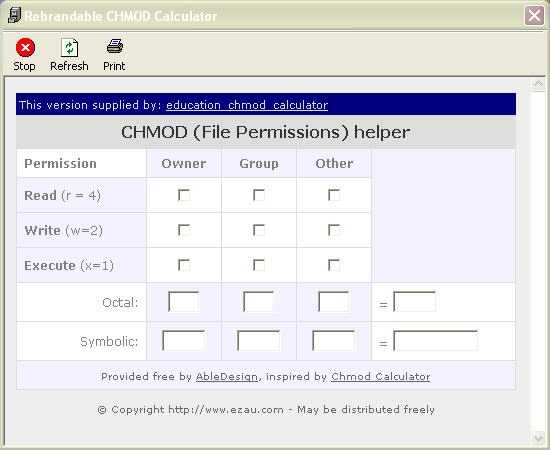
Education Chmod Calculator Standaloneinstaller Com

Linux Chmod Calculator Chmodcalculator

Chmod Wikipedia

Chmod 0400 Means

Reliable Online Converter Online Converter Linux Permissions Calculator

Chmod Calculator Tizen Developers

Freechmodcalculator

Chmodcalculator

Why Opt For Chomad Calculator Calculator Online Calculator Online Converter

Unix Linux Permissions Calculator 1 0 Free Download

Easily Generate File And Directory Permissions With Chmod Calculator
Online Chmod Calculator Free Easy To Use Converter What Is Chmod Calculator Convertforfree Wattpad

Convert For Free The Best Site For Sha256 Conversions Convertforfree Online Converter Converter Conversation

Chmod Number Calculator In Chmod Calculator Scoop It
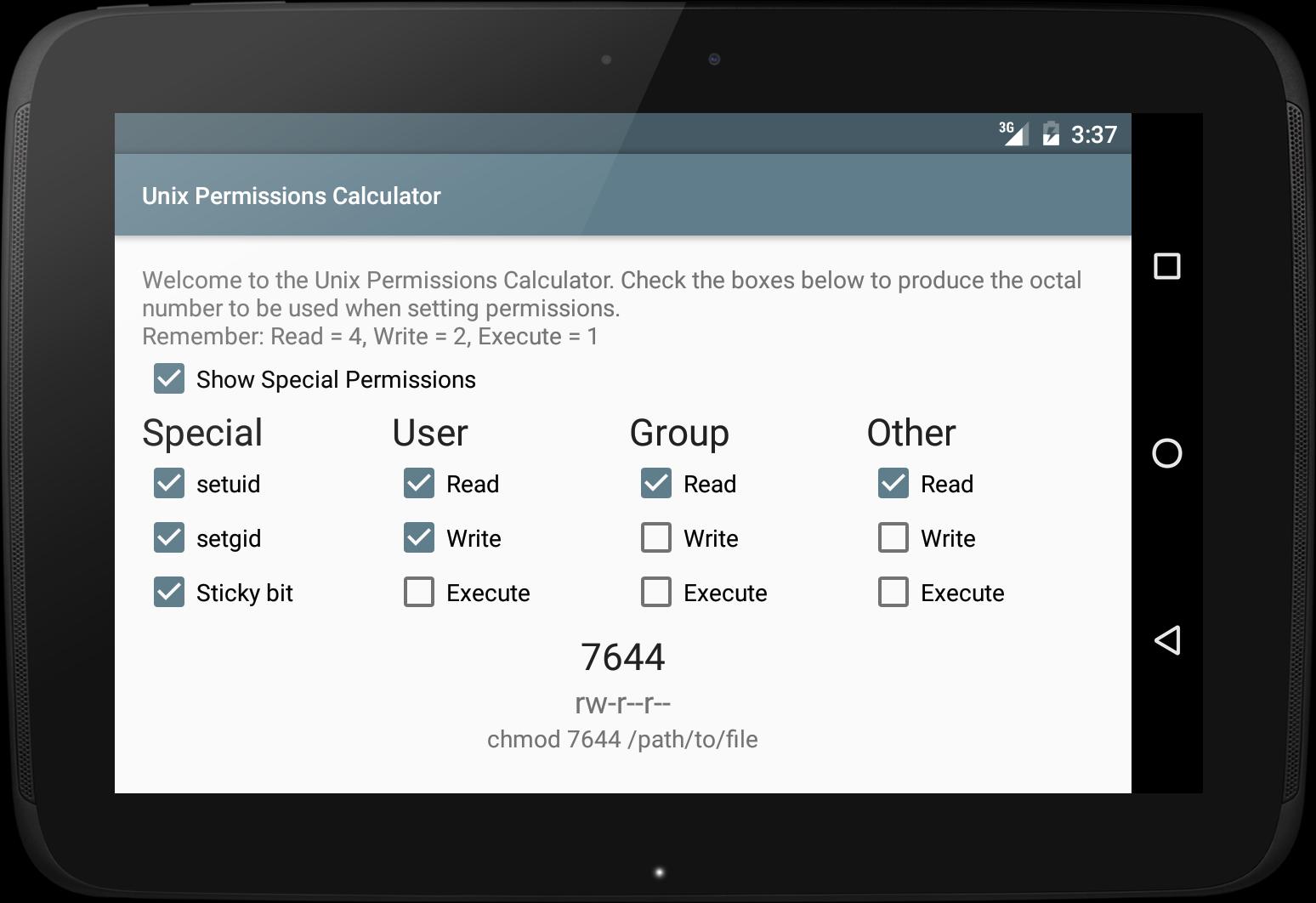
Unix Linux Permissions Calculator For Android Apk Download
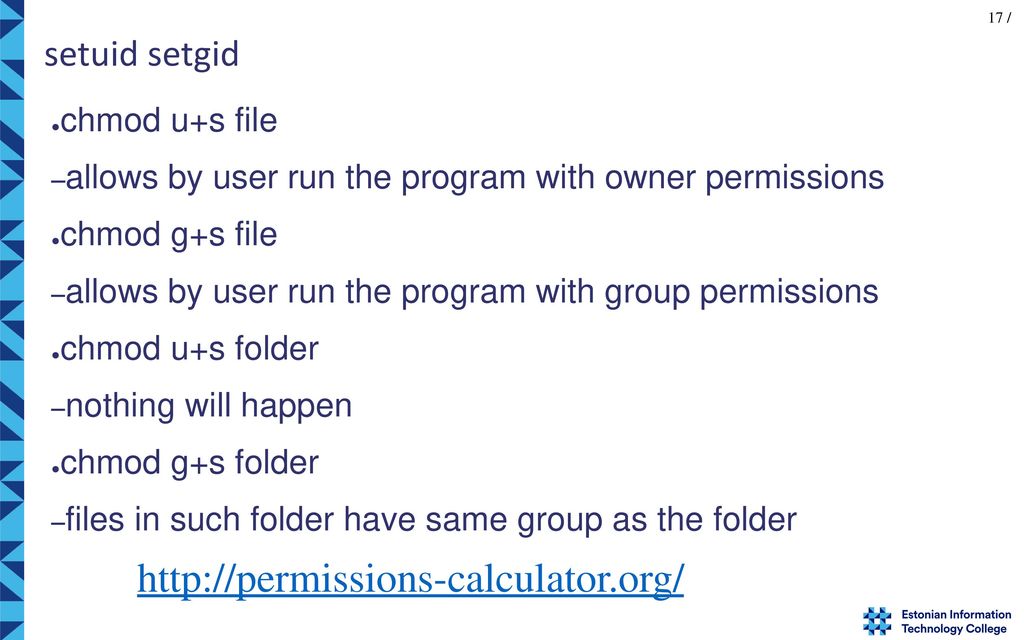
File Permissions Operating Systems I Ppt Download

Chmod Command Understanding How To Grant File Permissions

Linux Users And Groups Linode

Is There A Web Based Converter Between Rwx And The Octal Version Unix Linux Stack Exchange

C How Do I Give Write Permission To File In Linux Stack Overflow

What Is Chmod And Chmod Calculator Convert For Free
Q Tbn 3aand9gcr9rnnth31jdnr94db Zmbdt5bh907clokeeor9me5yqbuufaiw Usqp Cau

Chmod Easy File Access Permissions And Modification In Linux 5 0 Raviolican

Chmod Command Understanding How To Grant File Permissions

Chmod X Windows Nativeyellow

Chmod Unix Permissions Chmod Calculator Chmod Generator Softaox

This Chmod Calculator Makes Creating Chmod Commands A Cakewalk Hongkiat

Get Chmod Calculator Microsoft Store

How To Use Chmod Command In Linux With Examples T4tech
Q Tbn 3aand9gcr2lfpzbutqythmvbwafnxvyggqfj7hnw6fhh Kcozkk8m5 V7o Usqp Cau

Cronjob Chmod Calculator For Android Free Download And Software Reviews Cnet Download Com

How To Use Chmod Calculators Online Converter Calculator Converter
Chmod X Windows Nativeyellow
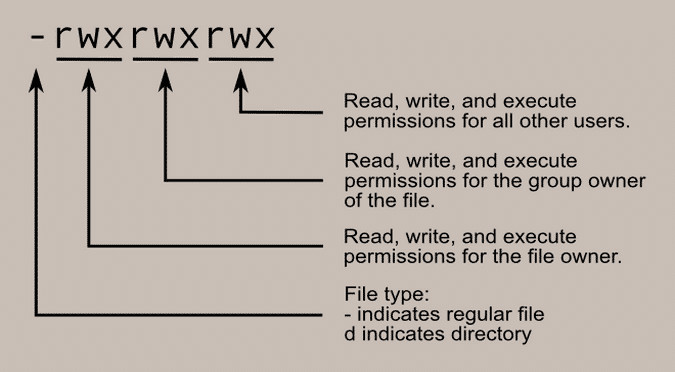
Write Access Chmod Directory

Chmod Calculator Calculate Linux File Permissions
Q Tbn 3aand9gcq1nsq3kxri7ryrifobs2rfobawbv4hezfw9 Ldf4feblahyn09 Usqp Cau

Unix Linux Permissions Calculator 1 0 Free Download

13 Fun Android Apps For Linux Unix Fans Unixmen

Chmod Calculator Sam Solomon

Linux File Permissions Train With Ctg
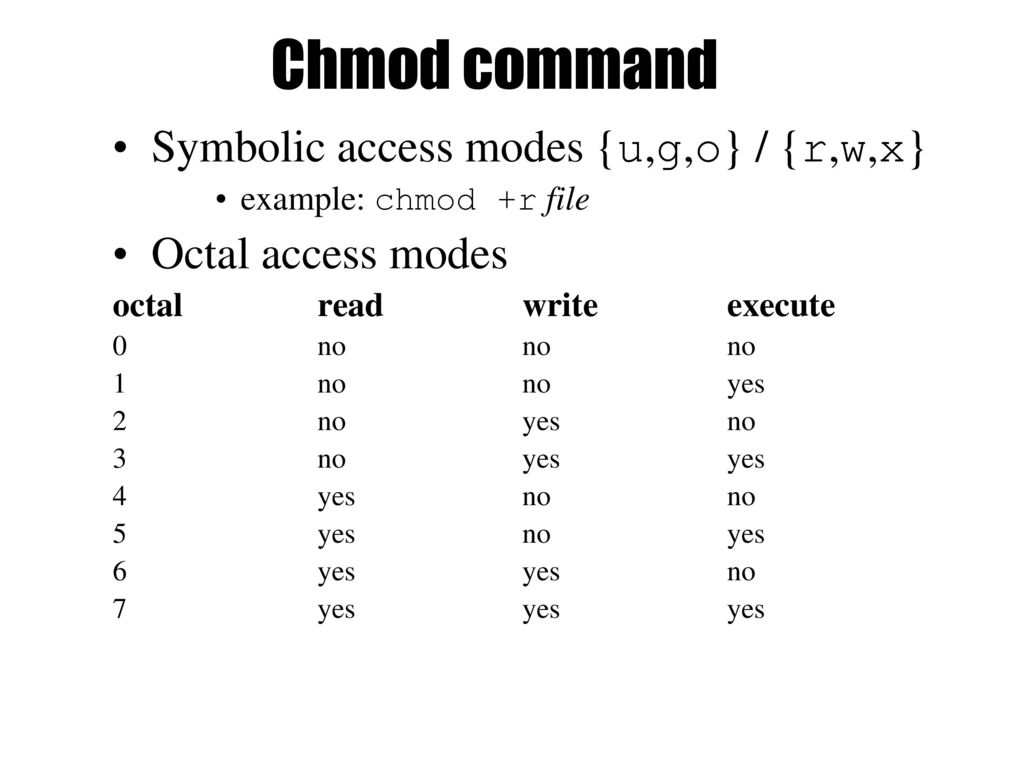
Chmod 0400 Means
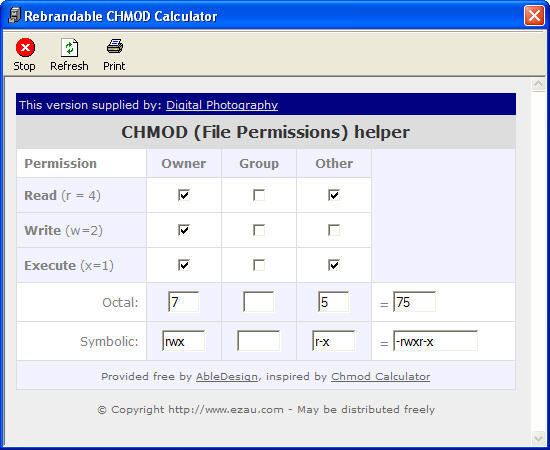
Digital Photography Software And Downloads Digital Photo Exe

Chmod 0400 Means

Chmod 777 Or 755 Learn To Use Chmod Command With Examples

Change File Permissions Easily With Online Chmod Calculator Convert

What Are User And Group Permissions 荷树栋 开发者的网上家园

How To Disable Access Directory Listing Hosting Support Infinityfree Forum

Chmod Calculator For Android Apk Download
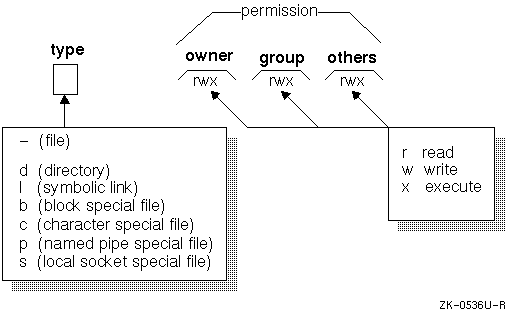
Unix Permissions

Chmod 0400 Means

Tech It Easy Chmod Calculator Built With Angularjs And Material Design
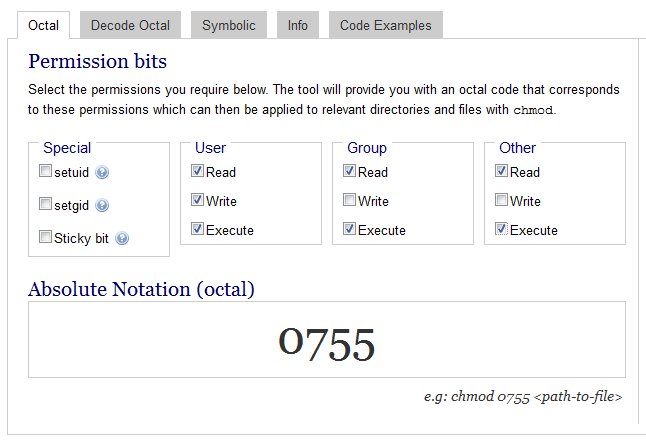
Jose Quintana Permissions Calculator Linux T Co 7smtmtribi

Chmod Calculator Chmod Generator Chmod Command

Change File Permissions Easily With Online Chmod Calculator By Chmodcalcu Issuu

Chmod Calculator For Android Apk Download

Why Chose Chmod Calculator Convertforfree

Linux Terminal Basics Chmod File Permissions Youtube
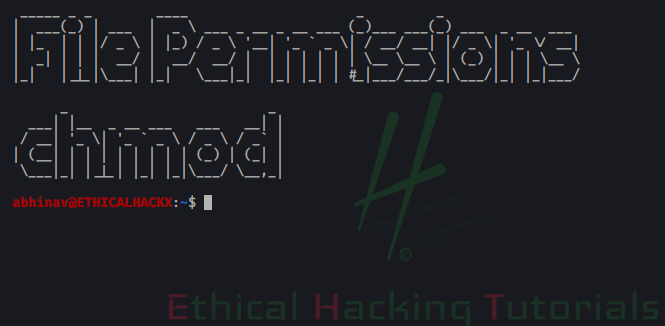
Chmod Twitter Search

Chmod Command Understanding How To Grant File Permissions

Chmod File Permissions In Linux Unix

This Chmod Calculator Makes Creating Chmod Commands A Cakewalk Hongkiat

Interview Question What Is Umask User Mask Or User File Creation Mask In Linux Linuxtopic Linuxtopic

Online Chmod Calculator Free Easy To Use Converter What Is Chmod Calculator Convertforfree Wattpad

Modify File Permissions With Chmod Linode

Unix Linux Permissions Calculator For Android Free Download And Software Reviews Cnet Download Com
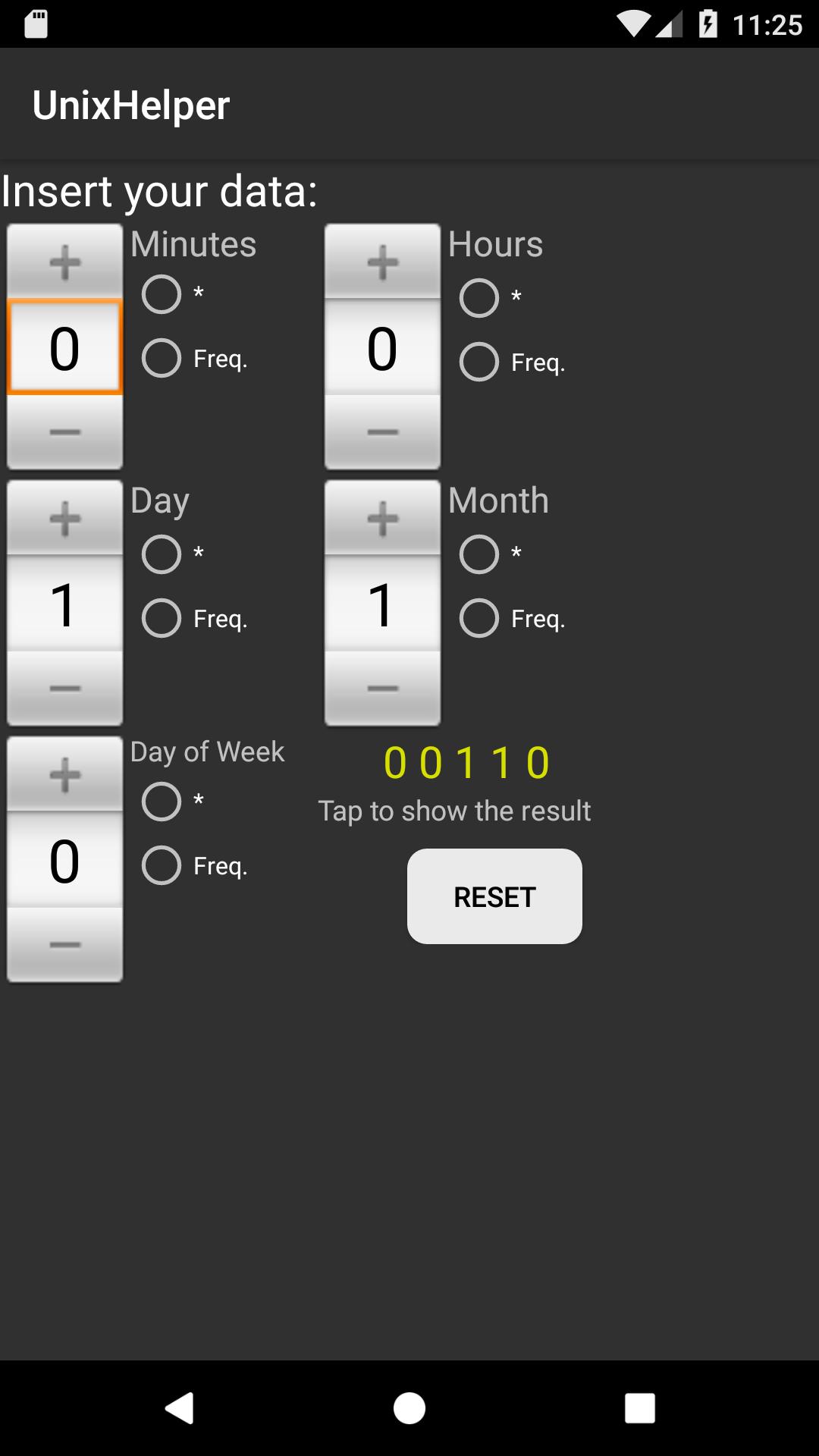
Cronjob Chmod Calculator For Android Apk Download
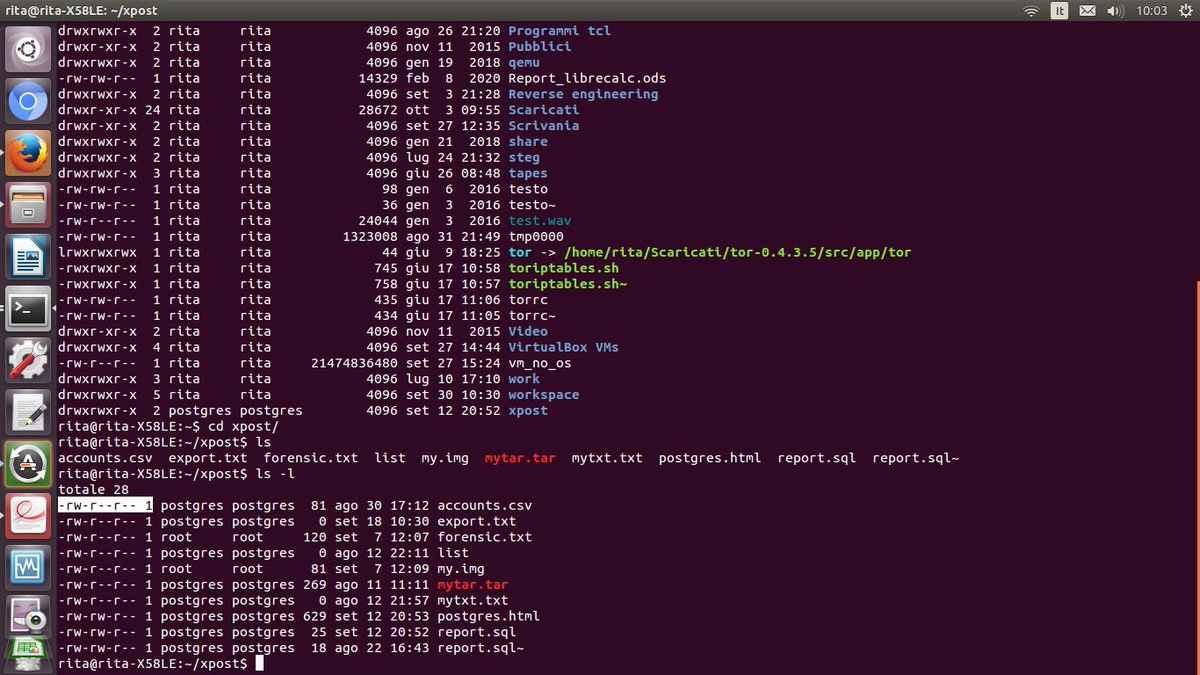
Vmfcc2n33zorjm

Chmod Command Understanding How To Grant File Permissions

Change File Permissions Easily With Online Chmod Calculator Convert
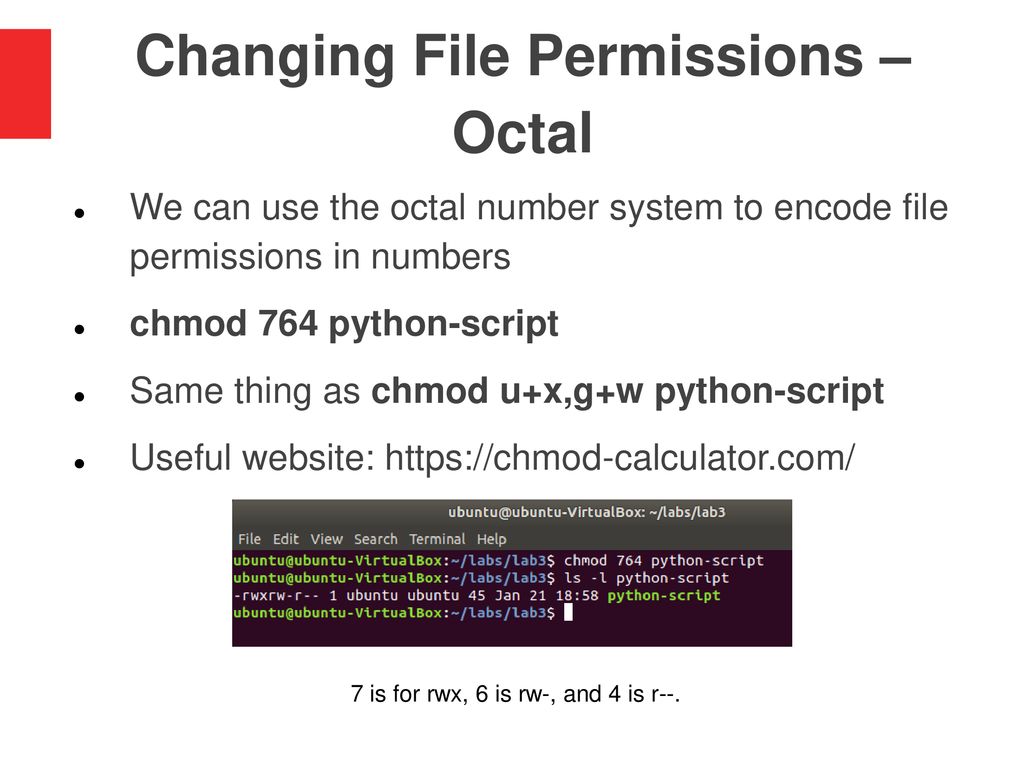
Lab 3 File Permissions Ppt Download
Online Chmod Calculator Free Easy To Use Converter What Is Chmod Calculator Convertforfree Wattpad
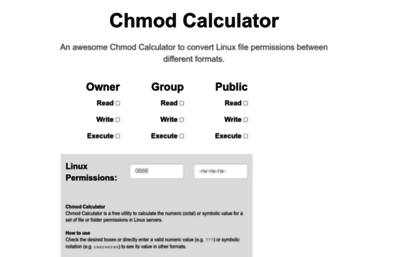
Chmod Calculator Com Website Chmod Calculator
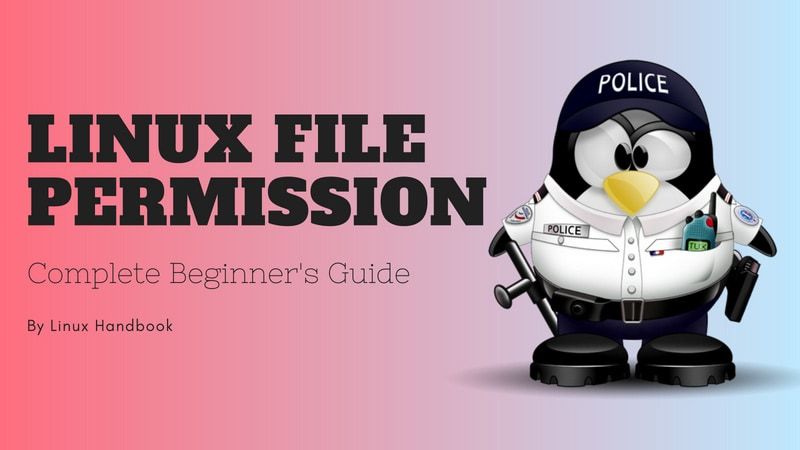
Chmod Calculator Calculate Linux File Permissions

Change File Permissions Easily With Online Chmod Calculator Convert

Online Chmod Calculator Free Easy To Use Converter Beverly Swanigan Wattpad

Chmod Command Understanding How To Grant File Permissions

Tech It Easy Chmod Calculator Built With Angularjs And Material Design
Q Tbn 3aand9gcs J72hjomdluhqe6xjivy M6yrjmkqx9x3z3ps Rpnb8by3w7z Usqp Cau
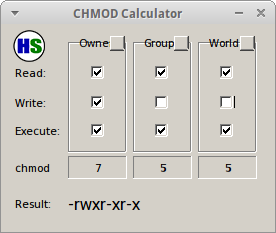
Haztek Software Chmod Calculator
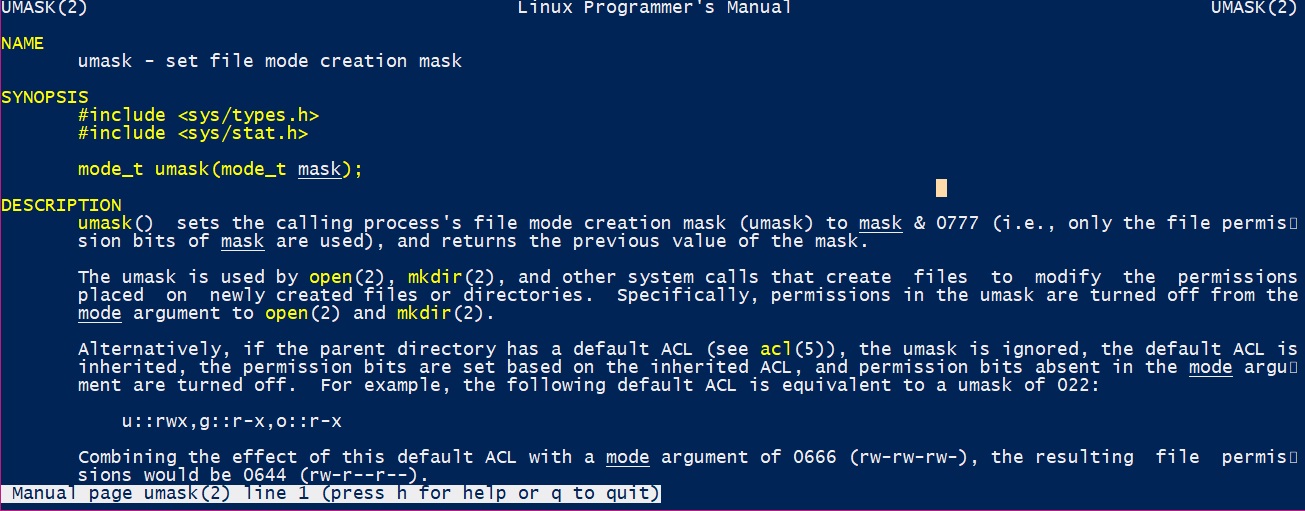
Umask Calculator Calculate A Umask Value In Linux Permissions

Chmod Calculator Calculate Linux File Permissions
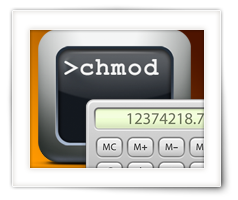
Tweaking4all Com Chmod Calculator Set File Permission With Chmod

A 2 Modify Permissions File And Directory Continued Engineering Libretexts

Linux Users And Groups Linode

Chmod 0400 Means
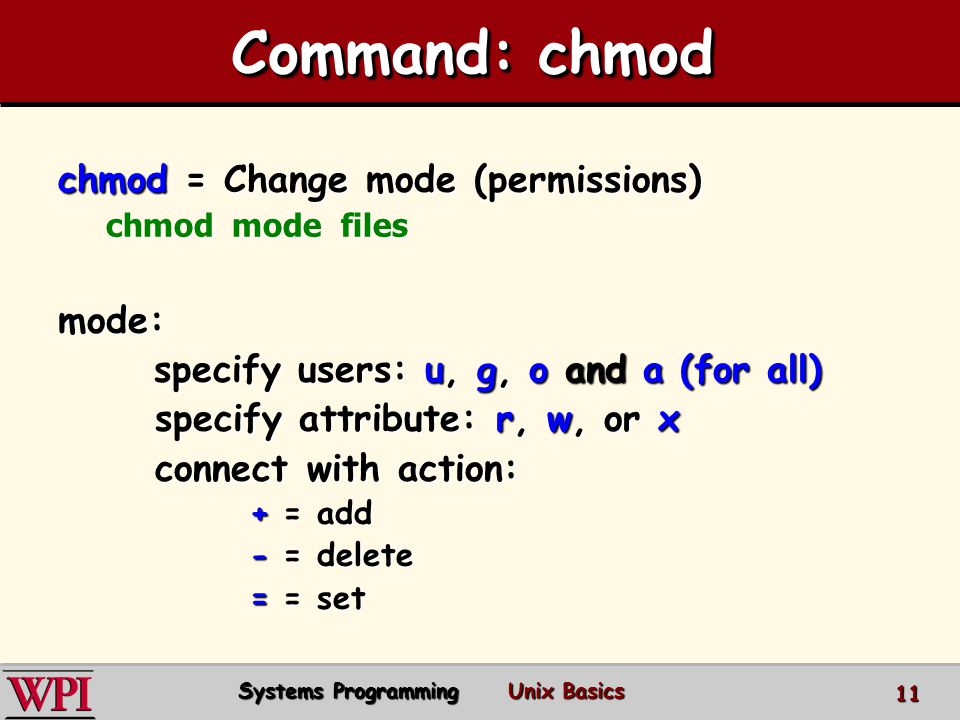
Chmod 0400 Means
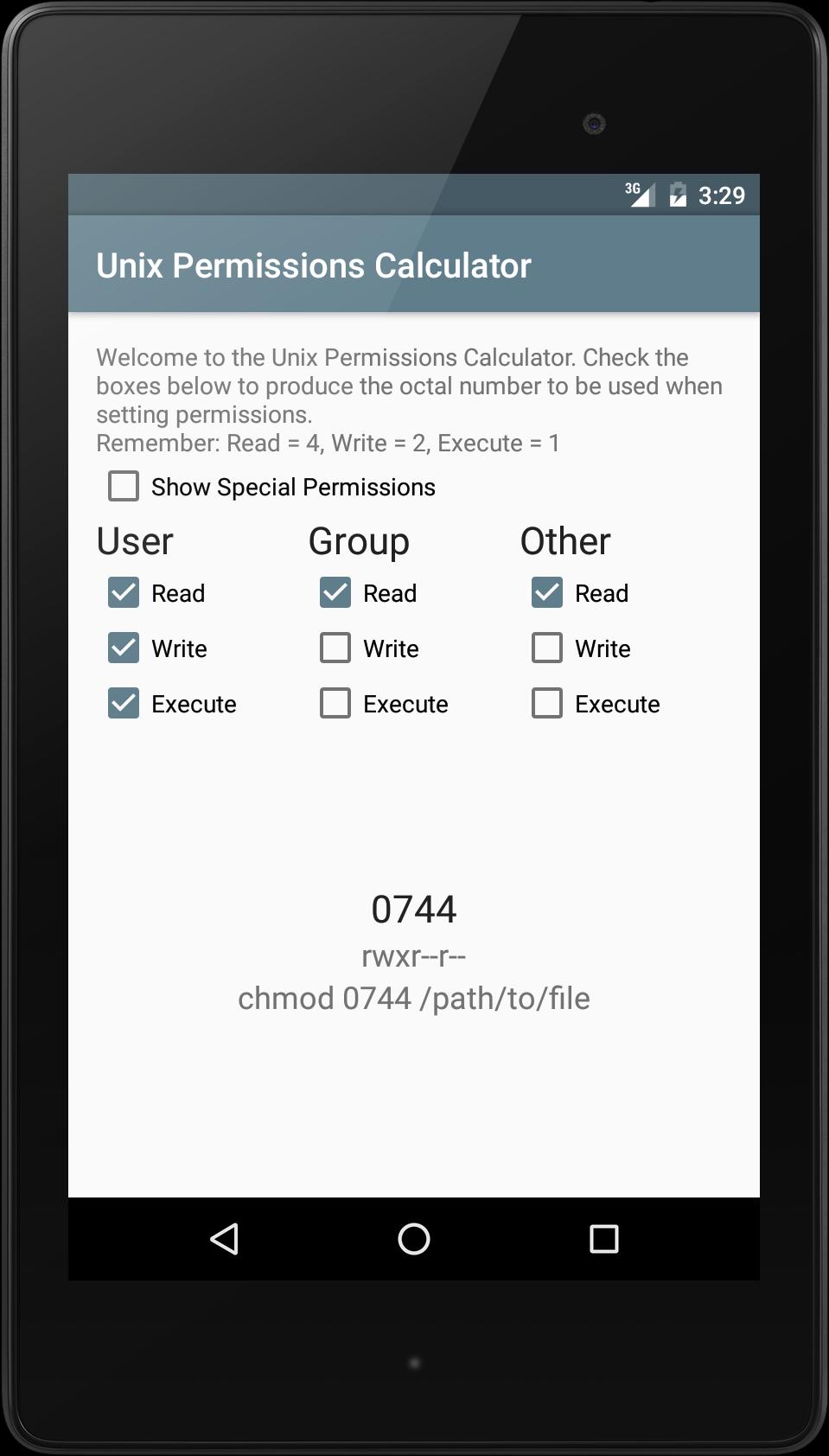
Unix Linux Permissions Calculator For Android Apk Download

Access Chmod Calculator Com Chmod Calculator

Chmod Calculator Sam Solomon

Cronjob Chmod Calculator For Android Free Download And Software Reviews Cnet Download Com

Cronjob Chmod Calculator For Android Free Download And Software Reviews Cnet Download Com

Change File Permissions Easily With Online Chmod Calculator Convert

Chmod Calculator Takes The Hassle Out Of Directory Permissions Techfruit

Sudo Sergeant 06 File Permissions Youtube

Chmod Calculator Sticky In Chmod Calculator Scoop It

Beverly Swanigan 𝗖𝗵𝗺𝗼𝗱 𝗖𝗮𝗹𝗰𝘂𝗹𝗮𝘁𝗼𝗿 Is A Tool For Finding The Numeric Or Symbolic Value For A Set Of File Or Folder Permissions In 𝗟𝗶𝗻𝘂𝘅 𝘀𝗲𝗿𝘃𝗲𝗿 Free To Use T Co Mzdufikfzk Ovulationcalculation

Chmod Calculator The New Trend Convert For Free
Linux Chmod Calculator Chmodcalculator

Posted Withrepost Terminalworld It Is The First Column In The Output Of Ls L Command Which Tells All About The Linux Linux Permissions Software Engineer

What Is Chmod Calculator Convertforfree By Chmodcalcu Issuu

Linux File Permissions And Chmod Doug Vitale Tech Blog



